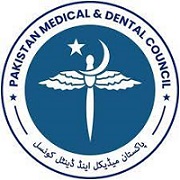OUTCOMES OF ANTEROMEDIAL PLATING VERSES ANTEROLATERAL PLATING FOR FRACTURE OF MIDDLE 1/3RD OF THE HUMERUS
Abstract
Background: Humerus shaft fracture accounts for 3-5% of all fractures commonly encountered by orthopedic surgeons. The application of plate for fracture of middle 1/3rd of Humerus is a gold standard in the presence of lot of intramedullary and extramedullary devices for these fractures.
Objectives: To compare the outcome of anterolateral plating with the anteromedial plating for fracture of middle 1/3rd of the Humerus.
Subjects and Methods:
Study Design: Randomized control trial
Study Setting: Department of orthopedic surgery services hospital Lahore
Study Duration: Jan 2018 to Jan 2019
Data collection and Analysis:
Total number 60 patients with fracture of middle 1/3rd of shaft of the humerus were admitted through emergency department of this hospital. Subjects were randomly assigned into two equal groups. In Group A all fractures were fixed with DCP on the anterolateral surface of Humerus with anterolateral approach while in group B all 30 patients with fracture of shaft of Humerus were plated on the medial flat surface of Humerus by anterolateral technique. The radial nerve injury was also assessed in both of these groups post operatively. All these patients were followed for 6 months with weekly interval up to 03 weeks, then at 06 weeks, 03 months and thereafter at 06 months. At each follow up each patient was evaluated clinically and radiologically for fracture union range of motion at elbow and shoulder joint and post operative complications. Data was entered and analyzed in SPSS ver: 21.0. Mean and standard deviation was calculated for quantitative variables and frequency and percentages for qualitative variables. Independent t–test was applied for numerical outcome and chi-square test was used for proportions with p < .05 as statistical significant.
Results: Mean age 42.2 + 5.98 years. 66.6% of the fractures were as a result of RTA Mean duration of surgery in Group A (Anterolateral surface) was 60.25 + 7.56 and in Group B (Anteromedial surface) was 52.34 + 10.29. (p < .001). Mean blood loss in group A was 110.17 + 12.36 and in Group B was 80.75 + 8.94 (p < .000). No radial nerve injury in group B while 3 (10.0%) patients had iatrogenic radial nerve palsy in group A (p =.076).
Conclusion: Anteromedial plating on the flat medial surface of Humerus is an excellent technique for fixation of fractures of middle 1/3rd of the Humerus as compared to anterolateral plating. It avoids the injury to the radial nerve.






